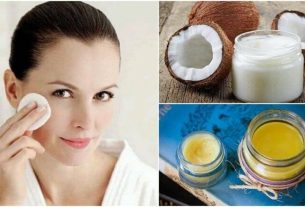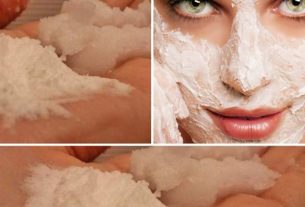The Ultimate Guide to Choosing the Right Shade of Concealer for Your Skin
When it comes to makeup, finding the perfect concealer can feel like a daunting task. There are so many shades, undertones, and formulations to choose from—how do you know which one will work best for your skin tone and type? I’ve been there, staring at a range of concealer shades, unsure of where to even begin. But the truth is, choosing the right concealer is simpler than it might seem. You just need a bit of knowledge about your skin and the product itself. And once you get it right, concealer can become your best friend, hiding blemishes, dark circles, and any imperfections in an instant.
In this guide, I’ll walk you through everything you need to know to pick the perfect concealer shade for your skin tone. Whether you’re a makeup novice or a seasoned pro, you’ll leave here with a newfound confidence in selecting the perfect product for your needs. Trust me—once you get this right, your makeup routine will become so much smoother.
Let’s dive in!
Why Choosing the Right Concealer Shade Matters
Before I get into how to pick the perfect shade, let’s talk about why it’s so important. Concealer is a game-changer—it’s designed to hide imperfections, brighten up areas like your under-eye circles, and even out your complexion. But choosing the wrong shade can make things worse instead of better. Imagine trying to cover a pimple with a concealer that’s too light—it’ll only make the imperfection more noticeable. Or, using a concealer that’s too dark for your under-eyes will make you look even more tired.
So, choosing the right shade of concealer is crucial not only for achieving that flawless look but also for ensuring that your makeup is seamless and natural-looking. You don’t want your concealer to be the focal point—you want it to blend perfectly into your skin so that the imperfections vanish without a trace.
Step 1: Identify Your Skin Tone
Before you even begin searching for the right concealer, you need to know your skin tone. This is the foundation for choosing any makeup product, especially concealer. There are three main skin tone categories:
- Fair: Light skin with a cool, pink undertone.
- Medium: Medium skin with a neutral or warm undertone.
- Deep: Darker skin with warm, red, or golden undertones.
How to Identify Your Skin Tone:
To figure out your skin tone, look at the veins on the inside of your wrist in natural daylight. If your veins appear blue, you likely have a cool undertone. If they appear greenish, you probably have a warm undertone. If you can’t tell, you may have a neutral undertone, which means you can wear both cool and warm shades.
Once you know your skin tone, finding the right concealer will be much easier.
Step 2: Understand Concealer Undertones
Not all concealers are created equal. They come in different undertones—just like foundation. So, once you know your skin tone, it’s important to select a concealer with an undertone that complements it. Here’s a quick breakdown of the different undertones:
- Cool Undertones: If you have fair skin with a pink, red, or blue base, you have cool undertones. Look for concealers labeled “cool,” “pink,” or “rose.” These will work best to neutralize blue or purple tones under your eyes or around blemishes.
- Warm Undertones: If you have medium or deep skin with a yellow, peach, or golden base, you have warm undertones. Choose concealers labeled “yellow,” “peach,” or “golden” to brighten and neutralize dark spots or redness in your complexion.
- Neutral Undertones: If your skin has a mix of both warm and cool tones, you likely have neutral undertones. Concealers with a balance of both pink and yellow will be perfect for you. Look for shades that say “neutral” or have a balanced mix of pink and yellow tones.
Understanding your undertones helps you choose a concealer that blends seamlessly into your skin without creating harsh lines or mismatched tones.
Step 3: Choose the Right Concealer Shade for Different Areas of the Face
Now that you understand your skin tone and undertones, it’s time to consider the different areas of your face and the types of concealers that work best for them. Here’s a breakdown of how to select the right shade for specific areas:
- Under the Eyes: To brighten the under-eye area, you’ll typically want a concealer that’s one or two shades lighter than your skin tone. This will help conceal dark circles while also adding a lifted, fresh appearance. However, avoid choosing a shade that’s too light, as this can make you look ashy or create a stark contrast with your natural skin. For those with darker skin tones, a peachy or orange-toned concealer can work wonders to cancel out blue or purple undertones.
- Blemishes and Acne: When covering blemishes, you’ll want a concealer that matches your exact skin tone. This will help cover imperfections without drawing attention to them. If your blemish is particularly red, choose a green-toned concealer first to neutralize the redness, then apply a concealer that matches your skin tone over it.
- Redness or Discoloration: If you’re trying to neutralize redness, a concealer with a yellow or green base works best. These colors will balance out the redness on your skin, leaving you with a smooth and even complexion.
Step 4: Test the Concealer on Your Skin
When you’re shopping for concealer, the best way to find your perfect match is by testing it on your skin. Don’t just swatch it on your hand—swatch it on your jawline or wrist, where your skin tone most closely matches your face.
Take note of how the concealer blends in with your natural skin and how it looks in different lighting conditions. Natural daylight is key to seeing how the shade truly matches. If you can, test it on your under-eye area and any blemishes as well to ensure the product provides the coverage you need.
Step 5: Consider Your Skin Type
Your skin type can also influence the type of concealer you choose. Here are a few considerations:
- Dry Skin: If you have dry skin, opt for a creamy, hydrating concealer. These formulas will provide coverage without clinging to dry patches or accentuating fine lines. Look for a concealer with added moisture, like those infused with hyaluronic acid or vitamin E.
- Oily Skin: For oily skin, go for a matte or long-wear concealer that controls shine and doesn’t slide off during the day. Oil-free formulas are a great choice to avoid clogging pores or causing breakouts.
- Combination Skin: If you have combination skin, you’ll want a versatile concealer that balances both dry and oily areas. Choose a formula that’s buildable, allowing you to adjust coverage based on your skin’s needs.
Step 6: Concealer Formula and Finish
Finally, consider the finish and formula of the concealer. There are several types of concealers to choose from, each with its unique benefits:
- Liquid Concealer: Liquid concealers are typically lightweight and provide buildable coverage. They’re great for covering large areas like the under-eye region or brightening the face.
- Cream Concealer: Cream concealers are thicker and more opaque, making them ideal for covering blemishes or redness. They tend to have a more matte finish and last longer on the skin.
- Stick Concealer: Stick concealers are the most portable and convenient. They’re perfect for on-the-go touch-ups and can provide full coverage with a more matte finish.
Each formula has its benefits, so choose one that aligns with your desired coverage and finish.
Final Tips for Finding the Perfect Concealer
- Always test concealers in natural lighting to see the true shade.
- Use a concealer brush or sponge for a seamless application that blends into your skin.
- Remember that concealers may oxidize, meaning the color might change a bit once it’s applied to your skin. Test for this by waiting a few minutes before making your final decision.
- Keep in mind the purpose of your concealer—whether you’re hiding blemishes or brightening your under-eye area, this will influence the shade and formula you choose.
FAQ
Q1: Should I choose a lighter or darker concealer for dark circles?
A1: You should choose a concealer that’s one or two shades lighter than your natural skin tone to brighten the under-eye area without looking unnatural.
Q2: Can I use the same concealer for blemishes and under-eyes?
A2: It’s best to use different concealers for blemishes and under-eyes. For blemishes, use a concealer that matches your skin tone. For dark circles, choose a lighter shade with a different undertone.
Q3: How can I make my concealer last longer?
A3: To make your concealer last longer, apply a light layer of setting powder or setting spray after application. This will lock it in place and prevent creasing or fading.
Q4: Can I wear concealer if I have oily skin?
A4: Yes! Look for oil-free or mattifying concealers that control shine and provide long-lasting coverage. A good primer before applying concealer will also help.
Choosing the right concealer may seem overwhelming, but by understanding your skin tone, undertone, and the different areas of your face that need concealing, you’ll be able to find the perfect match in no time. Take the time to test and experiment until you find the one that suits your needs—and soon, concealer will be your favorite step in your makeup routine!

Sign up for our newsletter and stay up to date with exclusive news
that can transform your routine!
Warning: Undefined array key "title" in /home/storelat/public_html/wp-content/plugins/link-whisper-premium/templates/frontend/related-posts.php on line 12
Warning: Undefined array key "title_tag" in /home/storelat/public_html/wp-content/plugins/link-whisper-premium/templates/frontend/related-posts.php on line 13




